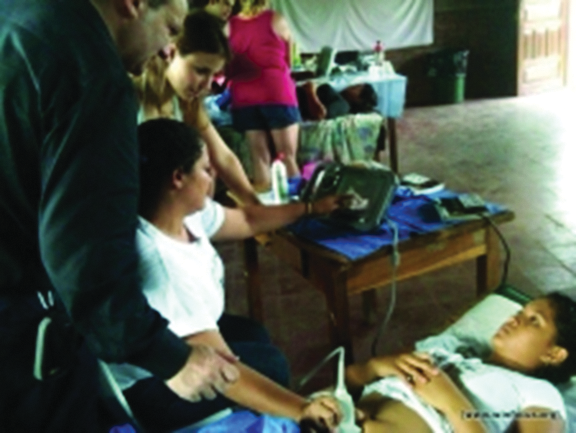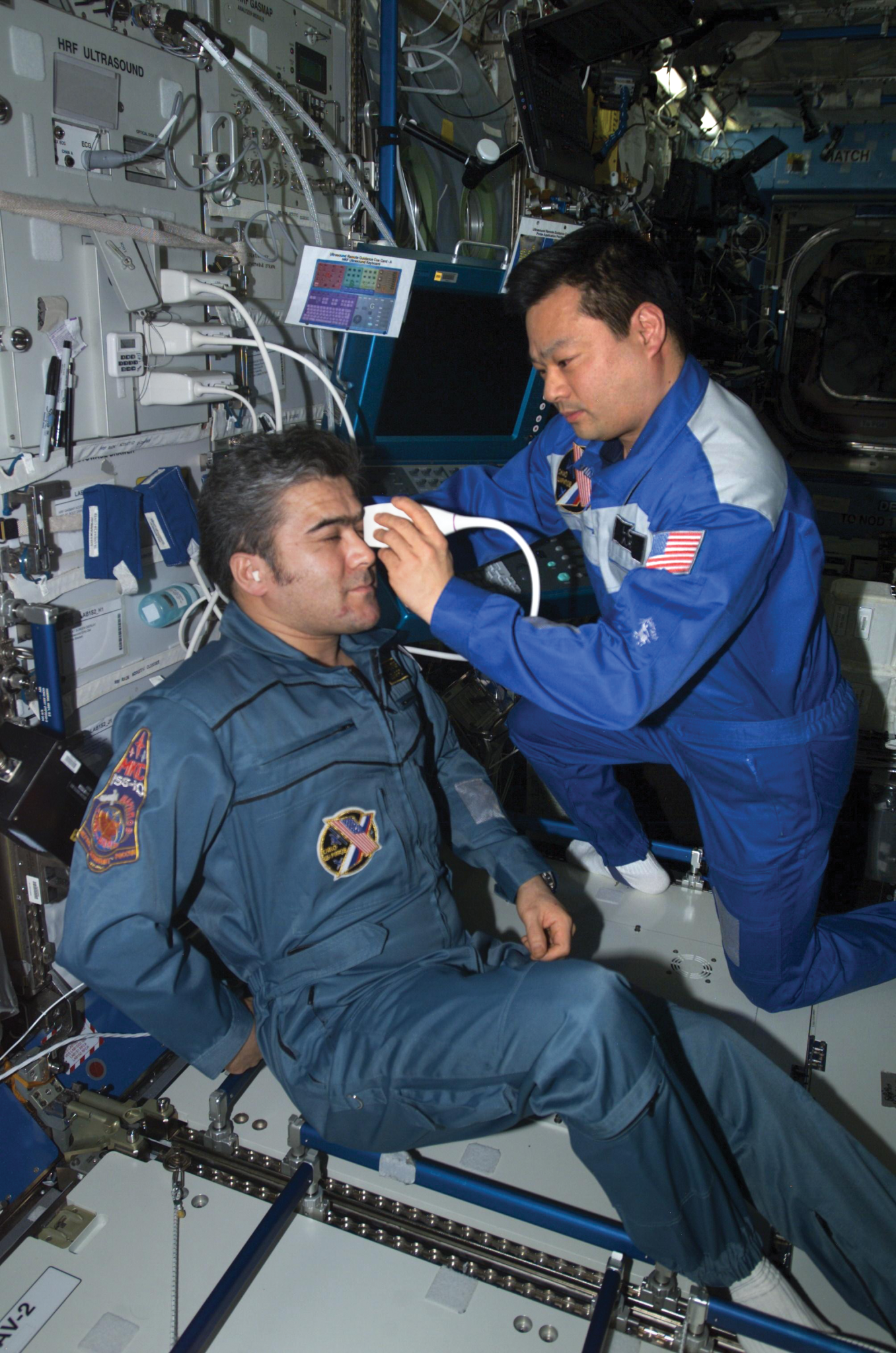For people who live in major cities with fully equipped hospitals, access to quick and accurate medical imaging technology is not usually a problem. However, for those without medical facilities within easy reach, getting access to this technology can mean the difference between life and death.
For astronauts in orbit aboard the International Space Station, that problem was addressed through the Advanced Diagnostic Ultrasound in Microgravity (ADUM) study. Astronauts were trained to use a small ultrasound unit to examine fellow crew members. In the event of a health concern, astronauts can use this unit to diagnose many injuries and illnesses with the help of doctors on Earth.
In partnership with the World Interactive Network Focused on Critical Ultrasound (WINFOCUS), ADUM principal investigator Scott Dulchavsky took techniques developed for station astronauts and adapted them for use in remote areas on Earth by developing protocols for rapidly performing complex procedures with remote expert guidance and training.
WINFOCUS has evolved the telemedicine and remote guidance techniques developed for use on the space station to allow use in large-scale healthcare systems on Earth through low-cost applications. Using the ADUM methods, WINFOCUS has trained more than 45,000 physicians and physician extenders in over 60 countries. As local healthcare providers are empowered, more patients can access quality and timely diagnostic care, and the healthcare system is made more efficient.

Sports medicine is also using these processes. Initially, ADUM-based ultrasound and remote guidance training were provided to non-physician athletic trainers for the Detroit Red Wings, Tigers, and Lions. These diagnostic capabilities were extended for use in the Olympic Games. An athletic trainer was remotely guided to perform a scan on a skier with an injured leg. The scan confirmed that she could continue to compete, and she won a gold medal three days later.
The impact of ADUM is even felt in emergency rooms by proving the effectiveness of ultrasound in diagnosing conditions previously considered beyond its technical capabilities, such as a collapsed lung. ADUM protocols have proven so effective that they are now part of the standard medical school curriculum: The American College of Surgeons, which requires ultrasound training for all surgical interns and residents, is using the ADUM program.
Building on this success, the upgraded Butterfly IQ Ultrasound is now being tested aboard station in preparation for deep space missions and in the field for taking data when astronauts return to Earth. Higher ultrasound image quality has historically been dependent on multiple probes and hardware too cumbersome for typical field conditions. Unlike past generations of ultrasound machines, Butterfly IQ has a single universal probe that works well on all organs, tissues, and blood vessels. The technology demonstration on the space station tests the use of this portable ultrasound in conjunction with a mobile computing device in microgravity. The investigation also collects crew feedback on ease of handling and quality of the ultrasound images, including image acquisition, display, and storage.
The combination of ADUM and new ultrasound technologies like Butterfly IQ will be a force multiplier for expanding access to diagnostic healthcare to areas previously left unattended, including deep space.
































